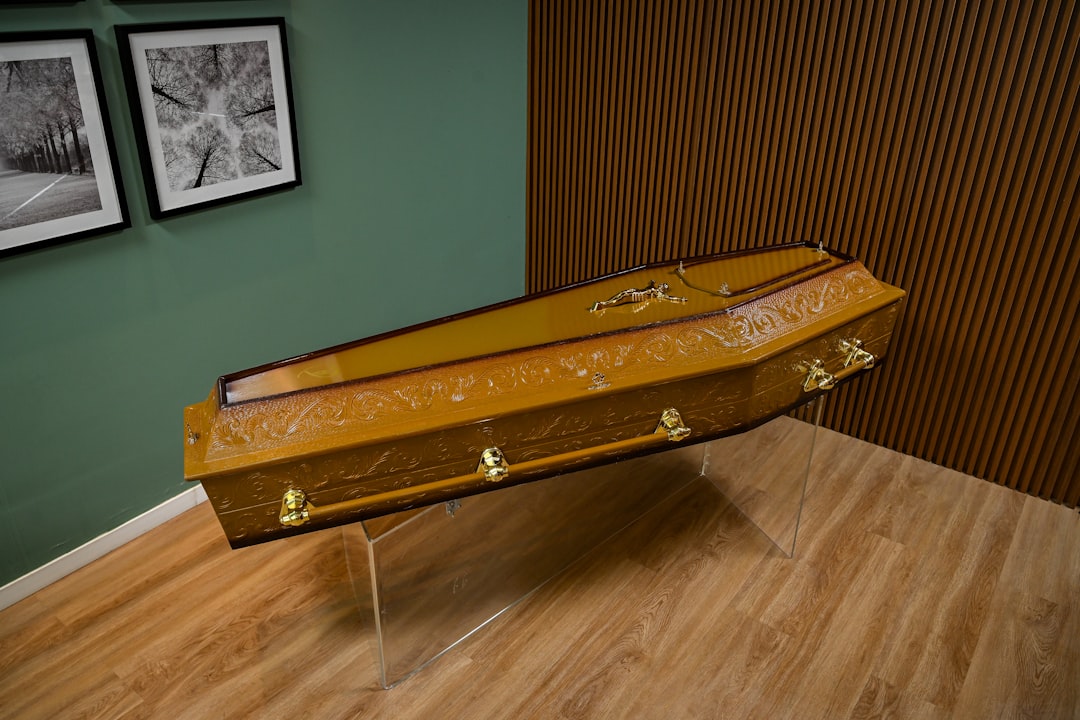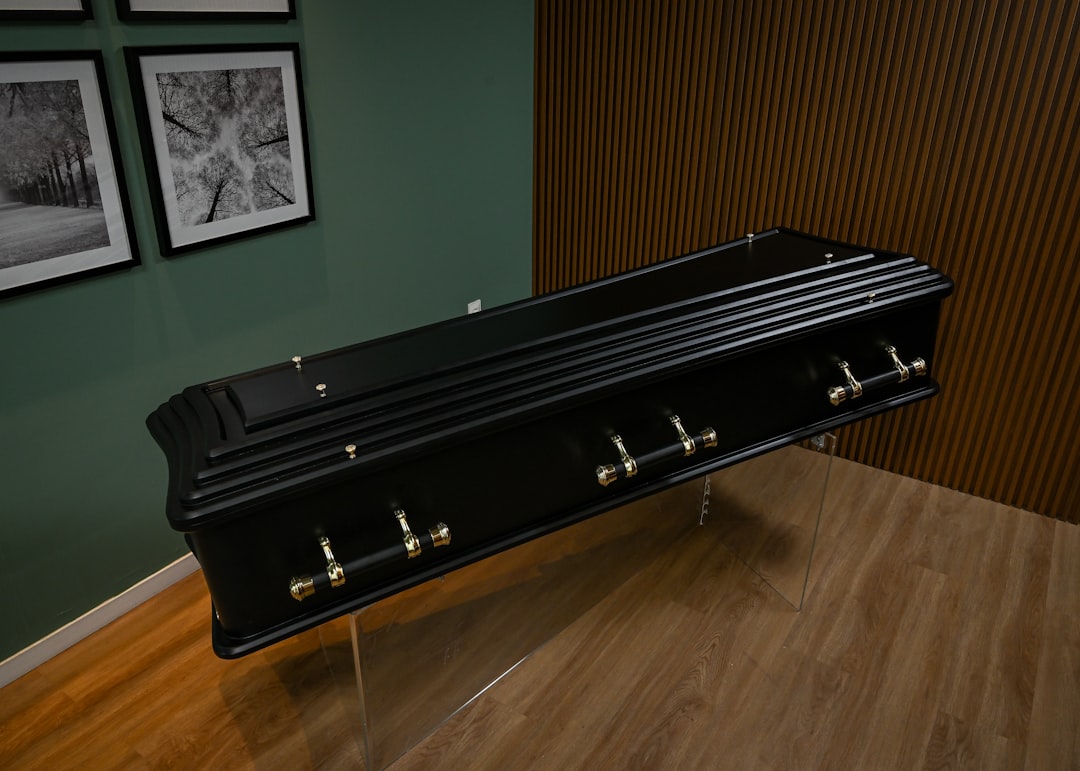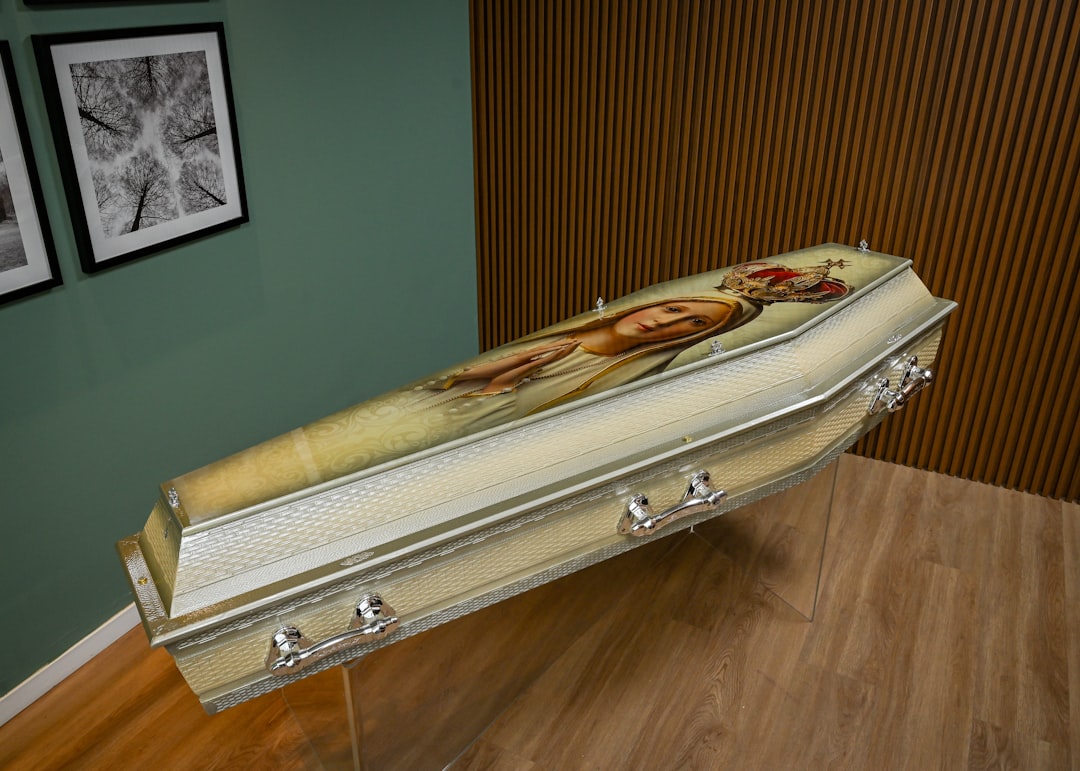

Engage prospects with a scan and streamline customer engagement with FREE QR code marketing tools by Sona – no strings attached!
Create a Free QR CodeFree consultation

No commitment

Engage prospects with a scan and streamline customer engagement with FREE QR code marketing tools by Sona – no strings attached!
Create a Free QR CodeFree consultation

No commitment
QR codes have evolved from a novelty to a strategic powerhouse in bridging offline engagement with online action. For funeral homes, QR codes powered by Sona QR represent a compassionate, discreet, and highly effective way to enhance funeral services, streamline information sharing, and connect grieving families and guests to vital resources without requiring cumbersome app downloads or technical setup.
Funeral home professionals increasingly face the challenge of meeting rising expectations for personalization, transparency, and immediate access to information, all while navigating the sensitivities of their client base. High-value prospects or family members can remain unengaged or untracked when their interests are not formally captured, resulting in lost touchpoints and missed opportunities for further support. QR codes help close these gaps while also promoting eco-friendly funeral practices by reducing paper usage and offering dynamic memorial experiences that adapt to each family's needs.
Thoughtful integration of QR codes into both physical and digital aspects of funeral home services enables seamless attendee experiences, empowers families with digital memorial options, and establishes more consistent follow-up. This direct, data-enabled engagement ensures that every meaningful interaction, from pre-planning inquiries to online tributes, is supported, measurable, and actionable in everyday operations. Explore practical applications in Sona QR’s use case library.

QR codes bridge the gap between physical touchpoints and digital outcomes, making it easier to achieve important goals like increasing memorial engagement, capturing pre-need inquiries, and digitally streamlining information dissemination for funeral homes. When used intentionally, they convert moments of quiet interest into clear, trackable actions without adding friction to already delicate situations. See more ideas in this roundup of funeral QR uses.
Common industry frustrations include losing high-value prospects who express interest but never submit a form, or missing out on valuable engagement signals from guests who interact with printed materials but remain anonymous. These challenges lead to missed opportunities for both ongoing support and business growth. QR codes help ensure that the people seeking information, comfort, or connection are met with the right resource in the right moment, and that their engagement can be thoughtfully followed up.
Here is how to address these realities step by step:
To illustrate the shift from analog to digital, consider a few examples that directly improve conversions and care quality:
A thoughtful QR engagement strategy ensures funeral homes never leave prospective families unacknowledged or disengaged while simultaneously enhancing operational efficiency and emotional service delivery. Whether your goal is to reduce paper waste, expand memorial participation, or grow pre-need pipelines, QR codes support both dignified experiences and measurable outcomes.

Funeral homes face several barriers when bridging offline and online engagement, often leading to lapses in communication, lost opportunities, and the inability to support families efficiently at scale. Printed materials can be misplaced, instructions can be misunderstood, and well-meaning guests may struggle to participate beyond attending the service.
QR codes provide a natural, user-friendly solution to these long-standing issues. With a quick scan, guests can access exactly what they need without extra steps or downloading an app. Families gain flexible options to update information on the fly, and funeral homes gain visibility into what matters to their communities. For an industry view, see this ICCFA trade perspective.
By closing operational and emotional gaps, QR codes help funeral homes manage sensitive moments with confidence. Families feel noticed and supported, while the business benefits from more consistent engagement, better attribution, and long-term growth rooted in care and clarity.

The demands of funeral service are unique. Information must be accurate, accessible, and delivered with care, and updates must be possible at a moment’s notice. Selecting the right QR format ensures the experience is useful, private, and appropriate for the setting.
Funeral homes consistently benefit from a focused set of QR formats that align with common needs across at-need and pre-need journeys. The following options are especially relevant for dignified service delivery and measurable engagement:
In most cases, dynamic QR codes are recommended. They allow you to update destinations if a service time changes, a memorial page is modified, or a new donation link is preferred. Dynamic codes also provide analytics that are essential for optimizing placements and messages. Static codes are best for evergreen resources like grief articles or a general contact page.

Capturing high-intent engagement is a persistent challenge for funeral homes, especially when data is scattered or uncollected. Guests attend services without signing in, relatives engage with printed programs without leaving a trace, and prospective families may research pre-planning without identifying themselves. Strategic QR placement at offline-to-online convergence points helps convert these moments into meaningful, trackable touchpoints.
Begin by mapping the physical journey in and around your facility, then overlay digital destinations that match likely needs. The following placements regularly surface new engagement, improve service clarity, and create opportunities for timely follow-up:
These tactics create a connected experience that respects the solemnity of the moment while providing measurable signals for service improvement and growth. Over time, the data reveals which placements are most helpful and where new resources could further support families.

Missed conversions often result from inconsistent data capture and a lack of simple follow-up mechanisms. QR codes address those issues head-on by turning printed materials, signage, and keepsakes into actionable digital entry points that do not disrupt the service environment.
Three high-impact use cases reliably improve both family experience and business results:
Each use case balances compassion and convenience, enabling guests to participate in the way that feels right for them while giving funeral homes the data needed to support families and plan services more effectively.
Funeral homes often serve multiple audiences simultaneously. Immediate family members, extended relatives, community guests, and pre-need researchers may engage at different times and through different materials. Without a plan to segment these interactions, valuable signals remain hidden and follow-up becomes generic or inconsistent.
QR codes simplify segmentation by encoding context into every scan. When you assign unique codes to specific journeys, you automatically build distinct audiences that can be supported with relevant messages and resources.
By transforming anonymous activity into actionable audience insights, funeral homes can deliver sensitive, timely outreach that strengthens relationships and drives sustainable growth without compromising dignity or privacy.
Disconnected marketing efforts create inconsistent messaging and missed opportunities, particularly when offline engagement does not synchronize with digital campaigns or CRMs. QR codes connect the dots across channels so every printed asset and in-person interaction contributes to a cohesive, measurable journey.
Align your channels and content so that each scan advances the relationship with clarity. The following applications work especially well for funeral homes:
Integrating a centralized QR platform helps coordinate delivery, unify data collection, and track performance across channels. With consistent analytics and automated syncing to your CRM, you can see which messages work best, where to invest, and how to improve outcomes for families and staff in real time.
A structured approach ensures your QR initiatives are respectful, reliable, and results-driven. The following steps are tailored to funeral home workflows and priorities, from memorial engagement to pre-need growth.
Start by identifying your most common offline touchpoints, then pair them with digital destinations designed to support families and capture intent. Test everything before a service or mailing, and confirm that any dynamic content has a clear owner for updates.
Clarify what you want to achieve, and match it to a single action per QR code. Simplicity helps guests understand the benefit instantly and improves scan rates. For memorials, prioritize emotional clarity. For pre-need initiatives, prioritize ease and trust.
Choose static codes for content that never changes and dynamic codes for anything you may want to update or measure. In most funeral contexts, dynamic codes are preferred because they safeguard against last-minute changes and enable analytics.
Design influences whether people notice, understand, and trust the code. Test across devices and lighting conditions to prevent failures during services or viewings. Respect cultural and religious norms to maintain dignity.
Place codes where they will be seen naturally and where scanning feels appropriate. Match placements to family preferences for privacy and consider environmental factors like lighting, crowd flow, and available surfaces.
Measurement transforms QR engagement into ongoing improvements. Use a centralized platform to monitor scans by time, device, and location, then connect these signals to your CRM to inform follow-up.
This programmatic approach helps funeral homes replace missed or lost contacts with actionable insights, supporting ongoing business growth and compassionate community service. Over time, it creates a feedback loop in which every scan improves your understanding of family needs and informs better experiences.
Visibility into real-time engagement and conversion data is often lacking in funeral home operations. Without clear attribution, it is difficult to know which materials or messages support families best or which channels drive meaningful outcomes like memorial participation and pre-need consultations. Missed follow-up can lead to churn, underused staff capacity, and unseen opportunities to help. For a strategic primer, read Sona’s blog post offline attribution guide.
Modern QR solutions bring a new level of transparency to these questions. By capturing data at the moment of interest and linking it to your systems, you can guide better decisions and deliver better care.
Platforms like Sona QR make it easier to capture and unify these signals in real time. Sona is an AI-powered marketing platform that turns first-party data into revenue through automated attribution and activation; see how to connect data flows in Sona + HubSpot. The result is a clear, end-to-end view from scan to outcome that informs both compassionate care and business performance.
Generic QR deployments can lead to shallow engagement. To maximize both emotional connection and measurable ROI, tailor your approach to the nuances of at-need and pre-need journeys, and give staff the tools to introduce QR interactions respectfully.
Consider these proven strategies to enhance your QR programs:
By embedding these practices, funeral homes can mitigate common pitfalls, increase scan rates, and turn every interaction into an opportunity to serve with care and clarity. Small refinements, from the wording of your CTA to the placement on a program, compound into significant gains for families and your business.
QR codes empower funeral homes to blend tradition with technology, offering seamless digital connections at life’s most pivotal moments. By transforming print and physical spaces into gateways to memorial content, planning tools, and support resources, funeral homes can enhance the customer journey, surface previously hidden engagement, and generate measurable growth. Every scan sharpens visibility into what families need, helps staff respond in real time, and preserves memories in ways that last.
QR codes are more than a shortcut for funeral homes. They form a strategic foundation for compassionate, connected, and data-driven service. With intentional design, thoughtful placement, and integrated analytics, you can bridge offline and online experiences, support families at every step, and optimize business outcomes. Platforms like Sona QR make it simple to generate, manage, and measure codes across channels, so every memory, inquiry, and tribute translates into supportive action and lasting community impact. Start creating QR codes for free.
QR codes have transformed funeral homes from traditional service providers into connected, compassionate guides for families during difficult times. Whether it’s streamlining service information, offering personalized memorial experiences, or facilitating seamless communication, QR codes replace cumbersome paper handouts with instant, mobile-friendly access that enhances the overall client journey. Imagine families easily accessing tribute videos, service details, or grief resources with a simple scan—helping your funeral home stand out through convenience and care.
With Sona QR, you can create dynamic, trackable QR codes in seconds that update instantly without the need to reprint materials. This means you can adapt messaging in real time, measure engagement, and understand which touchpoints truly resonate with families. Every scan becomes a meaningful interaction that builds trust and drives referrals. Start for free with Sona QR today and transform every scan into a connection that supports families and grows your funeral home’s impact.
QR codes can be used for digital memorial programs, livestream links, pre-planning inquiry forms, digital guestbooks, grief resources, donation portals, contact sharing, event check-ins, and Wi-Fi access at funeral services.
Funeral homes can improve marketing by placing unique QR codes on printed programs, signage, direct mail, and social media to capture engagement, segment audiences, track scan data, and automate personalized follow-up communications.
Using QR codes in funeral programs allows dynamic updates to service details, enables guests to share memories digitally, improves accuracy of guestbooks, reduces paper use, and provides measurable engagement data for follow-up.
Choosing the right funeral home involves considering their offered services, reputation, personalization options, transparency, and their use of modern tools like QR codes to support families and streamline information.
Funeral homes typically offer services including memorial programs, livestreaming services, grief support resources, pre-need planning consultations, guestbook management, donation facilitation, and personalized family support.
Use Sona QR's trackable codes to improve customer acquisition and engagement today.
Create Your FREE Trackable QR Code in SecondsJoin results-focused teams combining Sona Platform automation with advanced Google Ads strategies to scale lead generation

Connect your existing CRM

Free Account Enrichment

No setup fees
No commitment required

Free consultation

Get a custom Google Ads roadmap for your business






Launch campaigns that generate qualified leads in 30 days or less.
